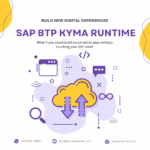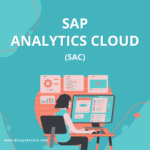Introduction
As organizations advance their digital transformation, real-time responsiveness is no longer a luxury but a necessity. Event-Driven Architecture (EDA) enables systems to react instantly to events, providing enhanced agility, responsiveness, and integration. For SAP customers, adopting EDA is a strategic move to drive efficiency and accelerate innovation.
Why SAP Customers Should Embrace EDA
Agility and Responsiveness
EDA decouples processes in SAP environments, enabling systems to react immediately to business events such as sales orders, inventory updates, or IoT alerts from SAP IoT services on the SAP Business Technology Platform (BTP). This agility allows SAP customers to adapt quickly to market changes and reduce time-to-market.
Scalability in a Cloud-First World
EDA aligns with modern SAP environments by enabling horizontal scaling to handle increased event volumes. Unlike traditional SAP ECC systems, which may struggle with peak loads, EDA ensures efficient event processing during high-demand periods, such as seasonal sales.
Seamless Integration in Hybrid Environments
SAP systems like S/4HANA, SAP Ariba, and SAP SuccessFactors often coexist with non-SAP applications. EDA facilitates loose coupling, enabling seamless integration across diverse systems. For example, SAP ECC can integrate smoothly with third-party logistics providers, improving supply chain efficiency through real-time updates in the SAP TM module.
Real-Time Decision-Making
By streaming business events from SAP modules (e.g., SAP S/4HANA or SAP BW/4HANA) into a central data warehouse, EDA supports real-time analytics. For instance, an SAP-based retailer can optimize pricing and promotions in real-time based on live sales data.
Supporting Digital Transformation
EDA fosters flexible, responsive, and data-driven architectures. It empowers SAP customers to deploy innovations like AI-driven predictive maintenance or personalized customer experiences, positioning them for success in the digital age.
SAP Integration Suite, Advanced Event Mesh
The SAP Integration Suite, Advanced Event Mesh (AEM), is a scalable, enterprise-grade platform designed to enhance EDA within SAP ecosystems. It ensures real-time event distribution across SAP and non-SAP applications, improving integration, data flow, and event management.
Key Features
- Event Brokering: Dynamically routes events across SAP modules and external systems.
- Multi-Cloud Support: Integrates solutions across different cloud providers and on-premises systems.
- Reliability: Guarantees high availability and fault tolerance.
- Security: Offers encryption and role-based access control.
- Monitoring: Provides real-time visibility into event flows.
- Event Management and Governance: Includes fine-grained access controls, policy enforcement, and auditing.
Real-World Applications of AEM
HR Integration for Enhanced Employee Experience
An international company using SAP SuccessFactors integrated HR data with external systems like payroll and communication tools using AEM. Events such as “new employee onboarding” triggered automated workflows, improving onboarding efficiency and employee satisfaction.
Streamlined Order-to-Cash Flow
An e-commerce company using SAP Commerce Cloud optimized its Order-to-Cash (OTC) process with AEM. Events like “order placed” triggered downstream processes such as inventory checks and fraud detection, reducing bottlenecks and enhancing customer experience.
Master Data Distribution
A global manufacturing firm synchronized master data across multiple systems using AEM. Real-time event propagation ensured all systems had current data, reducing inefficiencies and improving decision-making.
Types of Events in the SAP Ecosystem
Standard Events
Standard events in SAP systems like S/4HANA are generated based on predefined triggers such as sales order creation. These events ensure consistency and reliability and are enriched with additional data to improve downstream processes.
User-Defined Events
Custom events are tailored to specific business needs and feature rich payloads for seamless integration. For example, a “high-value order” event might alert multiple departments for immediate action.
Overcoming EDA Challenges in SAP ECC
SAP ECC’s modular design presents challenges in adopting EDA. Solutions like the Asapio Integration for SAP AEM enable event-driven capabilities in ECC applications without requiring ABAP coding. This enhances current systems and eases the transition to S/4HANA.
Effective Event Management and Governance
Successful EDA adoption requires strong governance to ensure data quality, security, performance optimization, and interoperability. This involves:
- Establishing robust standards for event management.
- Implementing real-time monitoring and observability.
- Ensuring compliance with regulatory requirements.
Summary and Next Steps
For SAP customers, adopting EDA enhances agility, scalability, and real-time decision-making. Solutions like AEM and tools such as Asapio Integration and SAP AIF provide robust platforms for integrating SAP and non-SAP systems.











